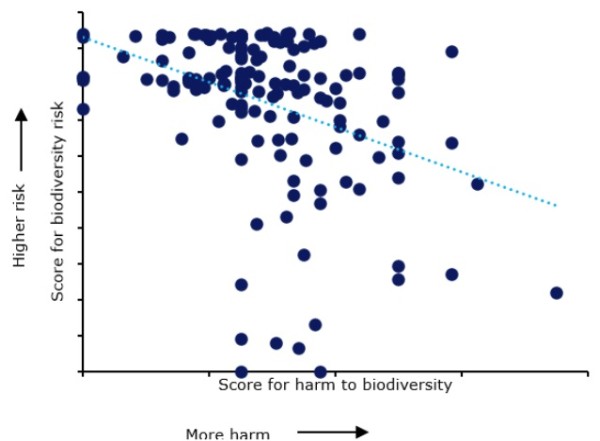DNB: Adequate pricing of biodiversity risks requires higher-quality data

The financial sector is exposed to risks as a result of biodiversity loss. To manage these risks adequately, the quality of available biodiversity data must be improved. For this reason, De Nederlandsche Bank (DNB) is urging for the creation of more transparent and standardised biodiversity indicators at the COP15 biodiversity conference in Montreal.
There is a growing recognition of the potential impact of biodiversity loss on the financial sector. For instance, in its Global Risks Report 2022, the World Economic Forum ranks biodiversity loss among the biggest global risks in the coming decade. About 15% of the MSCI World Index – a global stock market index comprising shares of about 1,500 large companies – operate in a sector vulnerable to biodiversity risks. Together, these companies have a market capitalisation of $7,000 billion.
Biodiversity loss threatens the survival of certain ecosystem services, such as animal pollination and soil formation, on which economic activities depend. A previous DNB study shows that Dutch financial institutions have material exposures to companies vulnerable to biodiversity risks. Dutch financial institutions have provided €510 billion in finance across the globe to companies that are highly or very highly dependent on one or more ecosystem services.
To measure is to know
Consistent and widely applied standards are needed to better manage biodiversity risks. Besides managing risk, more and more investors are seeking to have a positive impact on biodiversity. For example, in 2021, 84 financial institutions, with $12,600 billion in assets under management, stated their intention to increase cash flows to biodiversity goals in what is known as the Finance for Biodiversity Pledge. Both aims require the ability to monitor and measure the impact of biodiversity loss.
Biodiversity data is still under development
While biodiversity considerations are gaining prominence in the financial system, there are still shortcomings in the available data. For example, some indicators are not available for all companies. This is problematic because poor coverage makes them less suitable for financial risk analyses by market participants and financial institutions.
Also, biodiversity indicators often lack transparency in how they are calculated, which reduces their practical value. As a result, indicators from different providers cannot be easily compared and sometimes even produce contradicting results. This can be illustrated by comparing biodiversity scores from two major data providers (Figure 1).

These scores measure how much harm companies cause to biodiversity, and how vulnerable companies are to the risks of biodiversity loss. The comparison shows that their coherence is limited. Moreover, there is a negative correlation, suggesting that companies that cause more harm to biodiversity have a lower biodiversity risk. This is remarkable, given that a more harmful business model usually poses greater challenges associated with the need for future changes and therefore has a higher risk profile.
Towards more transparent and comparable indicators
Given the potential financial implications involved, we believe adequate pricing and management of biodiversity risks are crucial. To achieve this, the quality of the available biodiversity data must be improved. This is why we urge for action in various areas at the International Biodiversity Summit in Montreal: COP15.
For example, a clear global transition pathway towards a sustainable economy is needed. This calls for specified targets, for example with regard to reducing deforestation. This will allow investors and financial institutions to price in this transition – and the associated risks – in a timely manner. The creation of a clear and ambitious global transition pathway for biodiversity during COP15 would be a very important step in the right direction. In doing so, biodiversity loss and climate change must be addressed simultaneously, as they are mutually reinforcing.
Biodiversity indicators must be made more transparent and further standardised. Once investors better understand how indicators are constructed, they will find them to be more informative, easier to compare and easier to apply. Further standardisation of relevant indicators and biodiversity scoring methods will also enhance comparability.
In addition, more forward-looking risk metrics must be developed. In this area, we welcome the work of international standard setters, such as the Taskforce on Nature-related Financial Disclosures (TNFD), which is developing a global biodiversity risk reporting methodology. As for DNB, we contribute to enhanced forward-looking metrics by conducting research on biodiversity scenarios, and by driving international collaboration between central banks and supervisory authorities in this area as co-chair of the Taskforce on nature-related risks of the Network of Central Banks and Supervisors for Greening the Financial System (NGFS).










